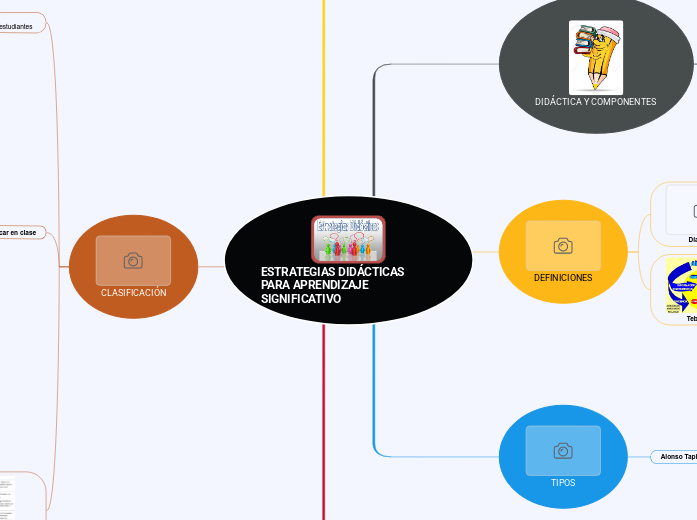por Elsa Patricia Urtecho Altamirano hace 4 años
276
ESTRATEGIAS DIDÁCTICAS PARA APRENDIZAJE SIGNIFICATIVO

por Elsa Patricia Urtecho Altamirano hace 4 años
276

Ver más
The Solar System is the gravitationally bound system of the Sun and the objects that orbit it, either directly or indirectly. Of the objects that orbit the Sun directly, the largest are the eight planets, with the remainder being smaller objects, the dwarf planets, and small Solar System bodies.
Mars is a cold, desert-like place covered in dust. This dust is made of iron oxides, giving the planet its iconic red hue.
Mars shares similarities with Earth: It is rocky, has mountains, valleys and canyons, and storm systems ranging from localized tornado-like dust devils to planet-engulfing dust storms.
Jupiter is a giant gas world that is the most massive planet in our solar system.
Its swirling clouds are colorful due to different types of trace gases.
And a major feature in its swirling clouds is the Great Red Spot, a giant storm more than 10,000 miles wide. It has raged at more than 400 mph for the last 150 years, at least.
Jupiter has a strong magnetic field, and with 75 moons, it looks a bit like a miniature solar system.
How long does it take for Jupiter to go around the sun?
Habilidades Cognitivas: Argumentar Juzgar Valorar Convencer Apoyar
Habilidades Cognitivas: Conectar Comprender Desarrollar Categorizar Reordenar
Habilidades Cognitivas: Planificar Explicar Decidir Inferir
Habilidades Cognitivas: Organizar Sintetizar Contrastar Describir Distinguir Explicar
Habilidades Cognitivas: Interpretar Criticar Elaborar Generar Resolver
A planet's day is the time it takes the planet to rotate or spin once on its axis.
Write down Jupiter's day measured in Earth days.
POST-INSTRUCCIONAL
“Se presentan al término del episodio de enseñanza, permitiendo una visión sintética, integradora e incluso crítica del contenido” CIERRE DE LA CLASE
CO-INSTRUCCIONALES
“Apoyan los contenidos curriculares durante el proceso de enseñanza y aprendizaje, fomentando la mejora de la atención y detección de la información principal” DESARROLLO DE CLASE
PRE-INSTRUCCIONALES
“Preparan y alertan en relación a qué y cómo aprender, incidiendo en la activación o generación de conocimientos previos” INICIO DE CLASE
Cierre
Mapa conceptual Mapa mental Cuadro sinóptico Organizadores gráficos Ilustraciones
Desarrollo
Blogs Organizadores gráficos Línea de tiempo Debate Entrevista Panel de discusión Juego de roles Oratoria Ensayo Tira cómica Búsqueda de información Silas filosóficas Barrida de texto
Inicio
Lluvia de ideas Cuadro T Organizadores Gráficos Ilustraciones Inferencias
Saturn is known most for its rings.
Galileo Galilei first thought it was an object with three parts: a planet and two large moons on either side.
Not knowing he was seeing a planet with rings, the stumped astronomer entered a small drawing — a symbol with one large circle and two smaller ones — in his notebook.
The rings are made of ice and rock and scientists are not yet sure how they formed. The gaseous planet is mostly hydrogen and helium.
Los participantes pueden experimentar cuando lo deseen. Los materiales de aprendizaje publicados permanentemente y las evaluaciones calificadas automáticamente son claramente asíncronas: los estudiantes pueden leerlas en cualquier momento.
Todos los involucrados en una actividad deben realizar su parte al mismo tiempo. Tales eventos a veces se llaman eventos en tiempo real o en vivo. Dichos eventos incluyen sesiones de chat, sesiones de pantalla compartida y pizarra, y videoconferencias.
How long does it take for Saturn to go around the sun?
A planet's day is the time it takes the planet to rotate or spin once on its axis.
Write down Saturn's day measured in Earth days.
Saturn has over 150 moons and satellites. However, of these vast numbers of moons, only 62 are known and confirmed as moons.
Name at least 5 of these moons.
Earth is a water world, with two-thirds of the planet covered by oceans.
It's the only world known to harbor life.
Earth's atmosphere is rich in nitrogen and oxygen.
Its name originates from 'Die Erde,' the German word for 'the ground.'
Earth may once have had two moons, nowadays it has just one.
Estudiante - Reconocer, aprender y aplicar la información y contenido
Docente - Promover y facilitar el aprendizaje significativo del estudiante
Venus is Earth's twin in size and has no moons.
Its surface has various mountains and volcanoes. Because of its thick, toxic atmosphere that's made of sulfuric acid clouds, Venus is an extreme example of the greenhouse effect. The average temperature on Venus' surface is 900 F (465 C).
Venus spins slowly from east to west, the opposite direction to most of the other planets.
The Greeks believed Venus was two different objects — one in the morning sky and another in the evening. Because it is often brighter than any other object in the sky, Venus has generated many UFO reports.
A planet's day is the time it takes the planet to rotate or spin once on its axis.
Write down Venus's day measured in Earth days.
Mercury is the smallest, only a little bit larger than Earth's moon. Mercury has no moon.
It experiences dramatic changes in its day and night temperatures: Day temperatures can reach a scorching 840 F (450 C), which is hot enough to melt lead. Meanwhile, on the night side, temperatures drop to minus 290 F (minus 180 C).
It also has a very thin atmosphere of oxygen, sodium, hydrogen, helium, and potassium and can't break-up incoming meteors, so its surface is pockmarked with craters, just like the moon.
A planet's day is the time it takes the planet to rotate or spin once on its axis.
Write down Mercury's day measured in Earth days.
Our Solar System has eight “official” planets which orbit the Sun.
Each planet is at a different distance from the sun. Name its position.
Específica - Métodos y Practicas en campos disciplinares
Diferenciada - Nivel Socioafectivo y Cognitivo
General - Teórica
Organizar la Enseñanza Favorecer el Aprendizaje
Interviene en el procesos de enseñanza y aprendizaje
La educación
Arte de la ciencia de enseñar o instruir